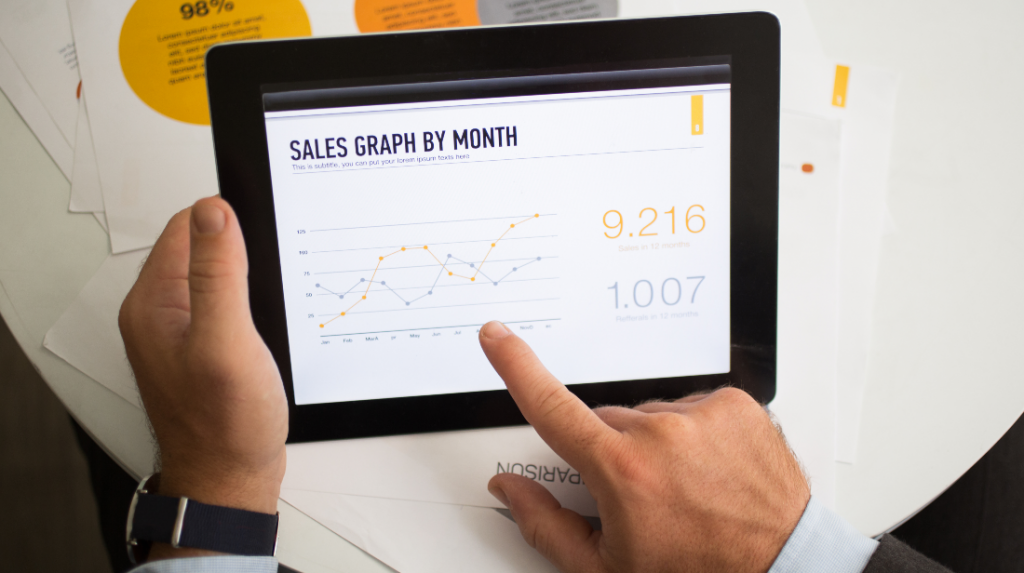
By 2025, the e-commerce sector will have become more competitive than ever, with more than 87% of buyers comparing prices on at least three sites before making a purchase (Statista, 2025).
The old methods of static pricing are no longer adequate with marketplaces like Amazon, Walmart, and niche D2C sites which provides competitive and time-sensitive prices. eCommerce brands that continue to use manual or traditional pricing models are facing conversion rates that are as much as 28% lower than those that employ intelligent pricing solutions.
This is why data-driven eCommerce pricing has become the vital element behind every successful modern pricing strategy. It allows brands to make well-informed and apt pricing adoptions by using real-time data on inventory readiness, competing pricing trends, seasonal demand swings, and buyer preferences.
Companies may obtain useful insights that are constantly updated and accurate with the help of powerful eCommerce data scraping tools and custom web scraping services. These technologies build the foundation of dynamic pricing engines, which empower retailers to both safeguard profits and attract customers by reacting in real time to market moves. The worth of data-backed, real-time methods in today’s market is highlighted by the fact that companies using automated pricing solutions reported a 35% rise in revenue growth year-over-year in a 2025 survey.
What is Data-Driven eCommerce Pricing?
Utilization of real-time data to set, alter, and enhance product prices across eCommerce platforms is known as data-driven eCommerce pricing. In contrast to traditional pricing models that depends on set margins or human assessments, this process practices data analytics, automation, and artificial intelligence to develop pricing policies that respond swiftly to dynamic market changes.
Real Life Use Case:
Dynamic Pricing: An online home essential retailer adjusts its prices every 10 minutes in response to rivals’ behavior and stock levels.
Pricing based on competition: To maintain a 4% price edge, a fashion company scrapes pricing information from Amazon and Zalando.
Pricing Tools Powered by AI: Dataseeders’ tailored pricing dashboards and RepricerExpress are examples of platforms that use machine learning to automatically adjust pricing.
Kinds of Data Employed
- Real-time competitor pricing from other platforms and third-party vendors
- Clicks, views, conversions, cart abandonment rates, and other measures of consumer behavior
- Stock condition and inventory amounts at different locations
- Timing of promotions Dates for flash sales, periods for discounts, and seasonal peaks
Businesses depend significantly on technologies like BI dashboards, APIs, and scraping bots that are connected with enterprise web crawling services to acquire and use this data. These technologies provide actionable pricing intelligence by continuously monitoring millions of SKUs across geographical regions and platforms.
Tools and Methods that Enable Data-Driven Pricing
- Services for enterprise web crawling gather both structured and unstructured price information from various marketplaces.
- Pricing, demand, and competition are among the topics covered by eCommerce Data Intelligence Services.
- Competitor Price Monitoring follows the pricing of competing SKUs, packages, and time-limited promotions.
- Trends in prices can be determined by analyzing price trends over time, noting whether prices are moving up or down.
As per a 2025 Forrester study, more than 70% of ecommerce businesses that use price trend analysis and competitor price monitoring upsurge their overall profit margins by an average of more than 16%. This showcases the immediate return on investment from incorporating data-driven pricing into eCommerce processes.
Data based ecommerce pricing is more than just altering the prices; it’s about employing smart algorithms to make wise choices in real-time. Precise and adaptive pricing tactics gives companies the ability to increase customer happiness, stay combative, and enhance margins.
Why Data is the Key to Make Pricing Decisions in 2025 and beyond?
By 2025 and beyond, it will become difficult for eCommerce companies to stay dependent on outdated and static pricing policies. Pricing has to be more reactive and tactical as consumer expectations keeps changing and competition heats up. Brands that use data to optimize pricing get a significant advantage by increasing conversion rates, decreasing shopping cart abandonment, and raising customer lifetime value (CLTV).
In digital era, consumers can compare prices across several platforms in a matter of seconds. You run the risk of losing potential clients to more nimble competitors if your pricing is not in line with the market or does not adequately represent the value perception. By giving firms real-time access to data on promotions, competitor discounts, inventory levels, and seasonal behavior, real-time data converts pricing from a risk factor into a performance driver.
Real-time promotional analysis is essential here. Brands that monitor and modify offers in real-time see much greater interaction and cart values. Due to the swinging price sensitivity across product categories, geographic areas, and even times of the day, sales performance data becomes essential for developing adaptive pricing strategies.
Key Benefits of Data-Driven Pricing Strategies
In the dynamic and competitive world of online retail, data backed eCommerce pricing aid companies to respond with agility, knowledge, and precision. Nowadays, businesses employ sophisticated price tracking systems and eCommerce data scraping services to optimize income, client happiness, and market share, rather than relying on speculation or set pricing strategies.
Let’s examine the top advantages that characterize the future of smart pricing.
Real-Time Monitoring of Competitors for Dynamic Adjustments
Businesses can monitor competitor pricing in real time across numerous platforms by utilizing enterprise web crawling services. This makes possible to make real-time pricing changes to stay competitive without sacrificing revenue. For instance, if a competitor reduces prices during a flash sale, your system can immediately counter by providing price parity or superior value via package promotions.
Enhanced Margins by Staying Competitive
Web scraping services not only help you track competitors, but also highlight possible margin opportunities. Intelligent pricing algorithms consider market demand, inventory levels, and promotional stages to determine the best price for each item. Businesses may now compete on value rather than price and yet see their margins growth.
Integrating Consumer Behaviour to Provide Personalization
Platforms may now gather a plethora of behavioural data, such as purchase frequency, page views, cart additions, and price sensitivity, thanks to e-commerce data scraping services. These insights allow brands to tailor pricing plans to specific groups or people.
Price Volatility based on Inventory
Limited stock? Raise the price to safeguard margins. Excess inventory? Decrease prices to move stock quickly. The core of smart pricing is real-time coordination of inventory and prices. Data-backed eCommerce pricing makes choices predictive rather than responsive.
Localized Pricing Based on Geo-Demand
Demand differs by location. With the help of web crawling services, brands can assess local trends and rivals before setting rates accordingly. For instance, a product that does well in Delhi but not in Pune requires region-based pricing optimization in order to increase local sales.
Industries Benefiting from Smart Pricing
In highly competitive eCommerce industry, data supported pricing is revolutionizing how businesses establish and modify prices in real time. Businesses are using intelligent pricing tactics in a variety of sectors, including fashion and pharmaceuticals, in order to boost conversion rates, raise profitability, and react quickly to market changes. The benefits to various industries are shown below:
Fashion Industry
Challenges
- Seasonal discounts are common
- Significant SKU volume with fluctuating demand
- Prices impacted by regional fashion trends
Solution
To stay competitive, Fashion businesses collect latest fashion trend data from social networks and rival prices from worldwide marketplaces with the help of web scraping services. Having access to these data, they can dynamically adjust prices in response to rival deals, inventory availability, and trending fashions. By matching rates with real-time price trend analysis, brands have seen revenue growth of up to 22%.
Electronics for Consumers
Challenges
- A quick drop in prices
- Online marketplaces hold flash sales
- Thin profit margins
Solution
Electronics merchants may react quickly to price decreases and offer timely discounts by using competitor pricing monitoring. With Real-time data, companies can prevent undervaluation while remaining combative throughout sales events. Brands employing such systems are able to uphold pricing margins 18% higher in compare to businesses using static approaches.
Q-commerce
Challenges
- Perishable goods with daily price changes
- Promotions that are unique to a certain area
- Intense competition in the fast-commerce sector
Solution
Q-commerce brands utilise ecommerce data intelligence solutions to automate price tracking across locations to positioning prices with demand and local discounts. Real-time monitoring enables platforms to provide better time-sensitive deals, which increases the frequency of orders by 30% along with lessening waste.
Pharmaceuticals
Challenges
- Restrictions imposed by the law on price variations
- Different subsidies and regional prices
- Online rivalry from pharmacy aggregators
Solution
By using price trend analysis to support their smart pricing, pharmaceutical businesses may maintain compliance while maintaining competitive rates. Real-time alerts and dashboards aid in the detection of pricing breaches and unlawful vendors. From 2023 to 2025, brands with this strategy saw a 38% decrease in problems pertaining to price compliance.
Irrespective of the business sectors, intelligent pricing allows brands to react more quickly to market changes, increase profits, and provide superior customer value. Companies can secure their pricing tactics with Dataseeders’ wide-ranging suite of tools, which covers eCommerce data scraping services, competitor price monitoring, and data intelligence solutions.
Conclusion
In the fiercely competitive digital environment, pricing success is based on using data-driven e-commerce pricing tactics rather than making educated guesses.
Businesses must react with agility and accuracy as competition rises and consumer behaviour changes quickly. That’s where the need of eCommerce data scraping services arise to get real-time information about pricing trends, competitor behaviour, and consumer preferences.
Looking to power-up pricing with data?
At Dataseeders, we help businesses to build and optimize their pricing strategies by delivering real-time eCommerce pricing data. Our profound data expertise and advance data scraping techniques ensure you get precise data as per your business requirement to gain competitive edge, improve conversions, and enhance ROI.




